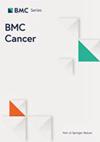硼替佐米、来那度胺和地塞米松与硼替佐米、多柔比星和地塞米松在新诊断多发性骨髓瘤中的比较
IF 3.4
2区 医学
Q2 ONCOLOGY
引用次数: 0
摘要
硼替佐米、来那度胺和地塞米松(VRD)以及硼替佐米、多柔比星和地塞米松(PAD)是中国新诊断多发性骨髓瘤(NDMM)患者常用的诱导方案。这项真实世界研究共招募了 390 名患者,其中 195 人接受 VRD 诱导治疗,195 人接受 PAD 诱导治疗。主要终点是无进展生存期(PFS)和严格完全缓解/完全缓解。在整个队列中,与 PAD 相比,VRD 的五年总生存期(OS)(74% vs. 59%,P = 0.0024)和五年无进展生存期(PFS)(67% vs. 37%,P = 0.0018)均有显著改善。值得注意的是,VRD治疗患者的中位OS和PFS均未达标,而PAD治疗患者的中位OS和PFS分别为77个月(60个月未达标[NR])和46个月(36个月未达标)。在标准风险细胞遗传学患者中,VRD 的五年 OS(83% 对 58%,p = 0.0038)和 PFS(78% 对 48%,p = 0.0091)均优于 PAD。然而,这些差异在高危患者中并无统计学意义。在移植患者中,与PAD相比,VRD的五年OS(91% vs. 67%,p = 0.014)和PFS(79% vs. 47%,p = 0.015)均优于PAD。在非移植患者中,与PAD组相比,VRD显示出改善五年OS(p = 0.085)和PFS(p = 0.073)的趋势。总之,VRD 在标准风险患者和接受移植的患者中显示出更优越的 OS 和 PFS 结果。这些研究结果表明,在真实世界的临床环境中,VRD 比 PAD 在治疗 NDMM 方面具有潜在优势。然而,由于VRD组和PAD组的移植率不平衡、高危细胞遗传学异常(HRA)检测的局限性以及所接受的周期疗法和挽救疗法之间的差异,本研究的结论应谨慎解读。本文章由计算机程序翻译,如有差异,请以英文原文为准。
Bortezomib, lenalidomide, and dexamethasone versus bortezomib, doxorubicin, and dexamethasone in newly diagnosed multiple myeloma
Bortezomib, lenalidomide, and dexamethasone (VRD), and bortezomib, doxorubicin, and dexamethasone (PAD), are commonly used in induction regimens for patients with newly diagnosed multiple myeloma (NDMM) in China. This real-world study enrolled 390 patients, 195 receiving VRD and 195 receiving PAD induction. The primary endpoint was progression-free survival (PFS) and stringent complete remission/complete remission. Across the entire cohort, VRD demonstrated significantly improved five-year overall survival (OS) (74% vs. 59%, p = 0.0024) and five-year PFS (67% vs. 37%, p = 0.0018) compared to PAD. Notably, the median OS and PFS were not reached for VRD-treated patients, while they were 77 months (60-not reached [NR]) and 46 months (36-NR), respectively, for PAD. In patients with standard-risk cytogenetics, VRD showed superior five-year OS (83% vs. 58%, p = 0.0038) and PFS (78% vs. 48%, p = 0.0091) compared to PAD. However, these differences were not statistically significant in high-risk patients. For transplanted patients, VRD was associated with superior five-year OS (91% vs. 67%, p = 0.014) and PFS (79% vs. 47%, p = 0.015) compared to PAD. In non-transplanted patients, VRD showed a trend towards improved five-year OS (p = 0.085) and PFS (p = 0.073) compared to the PAD group. In conclusion, VRD displayed superior OS and PFS outcomes in standard-risk patients and those who underwent transplantation. These findings suggest potential advantages of VRD over PAD in real-world clinical settings for NDMM treatment. However, due to the imbalance in transplantation rates between the VRD and PAD groups, limitations in testing for high-risk cytogenetic abnormalities (HRA), and the difference between the received cycles and salvage therapies, the conclusions of this study should be interpreted with caution.
求助全文
通过发布文献求助,成功后即可免费获取论文全文。
去求助
来源期刊

BMC Cancer
医学-肿瘤学
CiteScore
6.00
自引率
2.60%
发文量
1204
审稿时长
6.8 months
期刊介绍:
BMC Cancer is an open access, peer-reviewed journal that considers articles on all aspects of cancer research, including the pathophysiology, prevention, diagnosis and treatment of cancers. The journal welcomes submissions concerning molecular and cellular biology, genetics, epidemiology, and clinical trials.
 求助内容:
求助内容: 应助结果提醒方式:
应助结果提醒方式:


